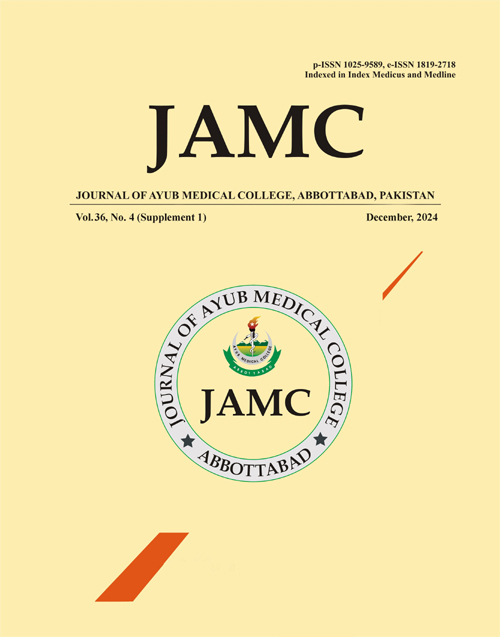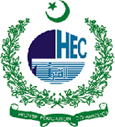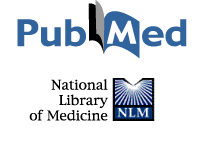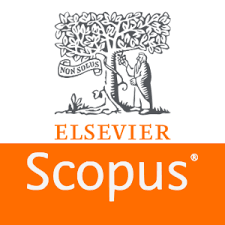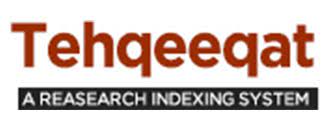MAJOR ADVERSE CARDIOVASCULAR EVENTS (MACE) IN STEMI PATIENTS WITH ELEVATED NEUTROPHIL-TO-LYMPHOCYTE RATIO UNDERGOING PRIMARY PERCUTANEOUS CORONARY INTERVENTION-A STUDY IN PAKISTANI COHORT
DOI:
https://doi.org/10.55519/JAMC-01-14770Keywords:
Neutrophil-to-lymphocyte ratio; STEMI; Major adverse cardiovascular events; Primary percutaneous coronary intervention; Risk stratification; PakistanAbstract
Background: Cardiovascular diseases (CVDs) remain the leading cause of death globally, with approximately 20.5 million fatalities recorded in 2021, representing nearly one-third of all deaths.¹ Low- and middle-income countries (LMICs) bear a disproportionate burden, accounting for 80% of these cases.¹ ST-segment elevation myocardial infarction (STEMI), a severe form of coronary heart disease (CHD), continues to contribute significantly to global morbidity and mortality.² In countries such as India and China, STEMI accounts for 60–80% of hospital admissions related to myocardial infarction (MI). This study aimed to evaluate the association between an elevated neutrophil-to-lymphocyte ratio (NLR) and the occurrence of major adverse cardiovascular events (MACE) in patients with STEMI undergoing primary percutaneous coronary intervention (PPCI). Methods: A retrospective observational study was conducted at a tertiary care cardiac center in Rawalpindi, Pakistan, from December 2018 to May 2019. A total of 155 STEMI patients treated with PPCI were included. Patients with active infections, autoimmune disorders, hematologic malignancies, severe renal or hepatic impairment, or those receiving immunosuppressive therapy were excluded. NLR values were calculated from blood samples collected upon hospital admission, and patients were divided into two groups: those with elevated NLR (≥4.8) and those with lower NLR (<4.8). The primary outcome was in-hospital MACE, defined as mortality and non-fatal MI. Statistical analysis involved univariate and multivariate logistic regression to identify independent predictors of MACE. Results: Of the 155 patients, 39 (25.2%) experienced MACE. The incidence of MACE was significantly higher in the elevated NLR group (84.6%) compared to the lower NLR group (15.4%) (p= 0.001). Univariate analysis demonstrated a strong association between high NLR and increased MACE risk (OR: 2.11; 95% CI: 1.61–2.76; p=0.001). Multivariate analysis, after adjusting for confounding variables, confirmed NLR as an independent predictor of MACE (AOR: 2.08; 95% CI: 1.57–2.74; p=0.001). Conclusion: Elevated NLR is a significant predictor of MACE in STEMI patients undergoing PPCI. Given its simplicity and cost-effectiveness, NLR may serve as a valuable biomarker for early risk stratification and targeted intervention in STEMI management.
References
1. Di Cesare M, Perel P, Taylor S, Kabudula C, Bixby H, Gaziano TA, et al. The Heart of the World. Glob Heart. 2024;19(1):11. doi:10.5334/gh.1288.
2. Akbar H, Foth C, Kahloon RA, et al. Acute ST-Segment Elevation Myocardial Infarction (STEMI) [Updated 2024 Oct 6]. In: StatPearls [Internet]. Treasure Island (FL): StatPearls Publishing; 2025 Jan–. Available from: https://www.ncbi.nlm.nih.gov/books/NBK532281/.
3. Herrera CJ, Levenson BJ, Natcheva A, Lucca AC, Olsson K, Miki K, et al. Improving STEMI Management Internationally: Initial Report of the American College of Cardiology-Global Heart Attack Treatment Initiative. JACC Adv. 2025;4(1):101438. doi:10.1016/j.jacadv.2024.101438.
4. Menhas S, Shehryar M, Saad M, Afridi A, Ali N, Khan A, et al. Distribution of Myocardial Infarction Regarding Hypertensive, Diabetes and Gender. 2022;16(12):667.
5. Qayoom R, Naseer A, Khokhar MI, Aijaz S, Hanif B. Risk factor profile and outcomes in young patients presenting with acute ST-segment elevation myocardial infarction. Europace. 2024;26(Suppl 1). doi:10.1093/europace/euae102.530.
6. Hao Y, Zhao D, Liu J, Liu J, Yang N, Huo Y, et al. Performance of Management Strategies With Class I Recommendations Among Patients Hospitalized With ST-Segment Elevation Myocardial Infarction in China. JAMA Cardiol. 2022;7(5):484–91. doi:10.1001/jamacardio.2022.0117.
7. Mulvihill NT, Foley JB. Inflammation in acute coronary syndromes. Heart. 2002;87(3):201–4. doi:10.1136/heart.87.3.201.
8. Buonacera A, Stancanelli B, Colaci M, Malatino L. Neutrophil to Lymphocyte Ratio: An Emerging Marker of the Relationships between the Immune System and Diseases. Int J Mol Sci. 2022;23(7). doi:10.3390/ijms23073636.
9. Zhang S, Diao J, Qi C, Jin J, Li L, Gao X, et al. Predictive value of neutrophil to lymphocyte ratio in patients with acute ST segment elevation myocardial infarction after percutaneous coronary intervention: a meta-analysis. BMC Cardiovasc Disord. 2018;18(1):75. doi:10.1186/s12872-018-0812-6.
10. Kaya MG, Akpek M, Lam YY, Yarlioglues M, Celik T, Gunebakmaz O, et al. Prognostic value of neutrophil/lymphocyte ratio in patients with ST-elevated myocardial infarction undergoing primary coronary intervention: a prospective, multicenter study. Int J Cardiol. 2013;168(2):1154–9. doi:10.1016/j.ijcard.2012.11.074.
11. Ul Hussain H, Kumar KA, Zahid M, Husban Burney M, Khan Z, Asif M, et al. Neutrophil to lymphocyte ratio as a prognostic marker for cardiovascular outcomes in patients with ST-segment elevation myocardial infarction after percutaneous coronary intervention: A systematic review and meta-analysis. Medicine (Baltimore). 2024;103(26):e38692. doi:10.1097/md.0000000000038692.
12. Sharma DJ Sr, Nath HJ, Batta A, Goala AK. Neutrophil-to-Lymphocyte Ratio (NLR) Useful as a Cost-Effective Preliminary Prognostic Marker in ST-Elevation Myocardial Infarction (STEMI): An Observational Study From a Tertiary Care Hospital in Northeast India. Cureus. 2023;15(3):e36885. doi:10.7759/cureus.36885.
13. Wang Y, Ju M, Chen C, Yang D, Hou D, Tang X, et al. Neutrophil-to-lymphocyte ratio as a prognostic marker in acute respiratory distress syndrome patients: a retrospective study. J Thorac Dis. 2018;10(1):273–82. Available from: https://jtd.amegroups.org/article/view/18195.
14. Zhang X, Wei R, Wang X, Zhang W, Li M, Ni T, et al. The neutrophil-to-lymphocyte ratio is associated with all-cause and cardiovascular mortality among individuals with hypertension. Cardiovasc Diabetol. 2024;23(1):117. doi:10.1186/s12933-024-02191-5.
15. Zahorec R. Neutrophil-to-lymphocyte ratio, past, present and future perspectives. Bratisl Lek Listy. 2021;122(7):474–88. doi:10.4149/bll_2021_078.
16. Sawant AC, Adhikari P, Narra SR, Srivatsa SS, Mills PK, Srivatsa SS. Neutrophil to lymphocyte ratio predicts short- and long-term mortality following revascularization therapy for ST elevation myocardial infarction. Cardiol J. 2014;21(5):500–8. doi:10.5603/CJ.a2013.0148.
17. Pan W, Zhao D, Zhang C, Li W, Yu J, Wang S, et al. Application of neutrophil/lymphocyte ratio in predicting coronary blood flow and mortality in patients with ST-elevation myocardial infarction undergoing percutaneous coronary intervention. J Cardiol. 2015;66(1):9–14. doi:10.1016/j.jjcc.2014.10.014.
18. Her AY, Cho KI, Singh GB, An DS, Jeong YH, Koo BK, et al. Plaque characteristics and inflammatory markers for the prediction of major cardiovascular events in patients with ST-segment elevation myocardial infarction. Int J Cardiovasc Imaging. 2017;33(10):1445–54. doi:10.1007/s10554-017-1135-x.
19. Samad Z, Noorali AA, Farhad A, Awan S, Qureshi NQ, Mawani M, et al. Leveraging Clinical Digitized Data to Understand Temporal Characteristics and Outcomes of Acute Myocardial Infarctions at a Tertiary Care Medical Centre in Pakistan from 1988–2018 – Methods and Results. Glob Heart. 2022. doi:10.5334/gh.1147.
20. Iqbal R, Jahan N, Hanif A. Epidemiology and Management Cost of Myocardial Infarction in North Punjab, Pakistan. Iran Red Crescent Med J. 2015;17(7):e13776. doi:10.5812/ircmj.13776v2.
21. Asada Y, Yamashita A, Sato Y, Hatakeyama K. Pathophysiology of atherothrombosis: Mechanisms of thrombus formation on disrupted atherosclerotic plaques. Pathol Int. 2020;70(6):309–22. doi:10.1111/pin.12921.
22. Guo J, Huang Y, Pang L, Zhou Y, Yuan J, Zhou B, et al. Association of systemic inflammatory response index with ST segment elevation myocardial infarction and degree of coronary stenosis: a cross-sectional study. BMC Cardiovasc Disord. 2024;24(1):98. doi:10.1186/s12872-024-03751-z.
23. El Kazzi M, Rayner BS, Chami B, Dennis JM, Thomas SR, Witting PK. Neutrophil-Mediated Cardiac Damage After Acute Myocardial Infarction: Significance of Defining a New Target Cell Type for Developing Cardioprotective Drugs. Antioxid Redox Signal. 2020;33(10):689–712. doi:10.1089/ars.2019.7928.
24. Tilley SL, Coffman TM, Koller BH. Mixed messages: modulation of inflammation and immune responses by prostaglandins and thromboxanes. J Clin Invest. 2001;108(1):15–23. doi:10.1172/jci13416.
25. Mikhael R, Hindoro E, Taner S, Lukito AA. Neutrophil-to-lymphocyte ratio for predictor of in-hospital mortality in ST-segment
Published
How to Cite
Issue
Section
License
Copyright (c) 2024 Arshad Ali, Kheraj Mal, Shahab, Muhammad Tehsin Raza, Qazi Najeebullah Amin, Samiullah, Samiullah Shakir

This work is licensed under a Creative Commons Attribution-NoDerivatives 4.0 International License.
Journal of Ayub Medical College, Abbottabad is an OPEN ACCESS JOURNAL which means that all content is FREELY available without charge to all users whether registered with the journal or not. The work published by J Ayub Med Coll Abbottabad is licensed and distributed under the creative commons License CC BY ND Attribution-NoDerivs. Material printed in this journal is OPEN to access, and are FREE for use in academic and research work with proper citation. J Ayub Med Coll Abbottabad accepts only original material for publication with the understanding that except for abstracts, no part of the data has been published or will be submitted for publication elsewhere before appearing in J Ayub Med Coll Abbottabad. The Editorial Board of J Ayub Med Coll Abbottabad makes every effort to ensure the accuracy and authenticity of material printed in J Ayub Med Coll Abbottabad. However, conclusions and statements expressed are views of the authors and do not reflect the opinion/policy of J Ayub Med Coll Abbottabad or the Editorial Board.
USERS are allowed to read, download, copy, distribute, print, search, or link to the full texts of the articles, or use them for any other lawful purpose, without asking prior permission from the publisher or the author. This is in accordance with the BOAI definition of open access.
AUTHORS retain the rights of free downloading/unlimited e-print of full text and sharing/disseminating the article without any restriction, by any means including twitter, scholarly collaboration networks such as ResearchGate, Academia.eu, and social media sites such as Twitter, LinkedIn, Google Scholar and any other professional or academic networking site.

